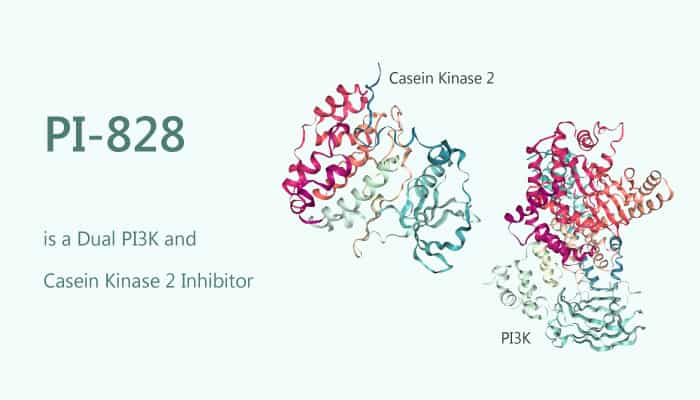PI3Ks (phosphatidylinositol 3-kinases) are lipid kinases responsible for the phosphorylation of phosphatidylinositols on the D3 position of their inositol ring. Specifically, The PI3Ks regulate cellular signaling networks. The processes involved these linked to the survival, growth, proliferation, metabolism and specialized differentiated functions of cells. Besides, The subversion of this network is common in cancer and has also been linked to disorders of inflammation. Owing to the pivotal role of the PI3K/Akt axis in cellular physiology, its perturbation has directly linked to various diseases. Moreover, many other genes in the PI3K pathway are also tumor suppressors. Casein kinase 2 (CK2) is a serine/threonine-selective protein kinase that has related to cell cycle control, DNA repair, regulation of the circadian rhythm, and other cellular processes. PI-828 is a dual PI3K and casein kinase 2 (CK2) inhibitor with good anti-cancer activity.

PI-828 is a dual PI3K and casein kinase 2 (CK2) inhibitor with IC50s of 173 nM, 149 nM, and 1127 nM for p110α, CK2, and CK2α2 in lipid kinase assay, respectively. In addition, CK2 showed robust binding to the PI-828-beads, with complete depletion of CK2 from samples achieved under the conditions used. It validated the direct interaction of VCP with the PI-828-matrix. Furthermore, PI-828 can bind with its linker to be docked into the ATP-binding site. The most abundant protein bound to the PI-828-matrix was ALDH2, one of five dehydrogenases identified. There is a putative hydrogen bond between the backbone of the enzyme and the linker region PI-828. Finally, PI-828 may directly target these domains. Nonetheless, PI-828 mitigated radiation-induced apoptosis in NCCIT cells. All in all, PI-828 is a dual PI3K and casein kinase 2 (CK2) inhibitor with good anti-cancer activity.
References:
Gharbi SI, et al. Biochem J. 2007 May 15;404(1):15-21.